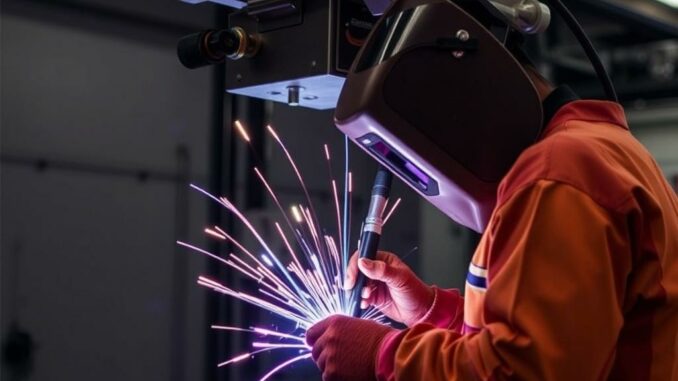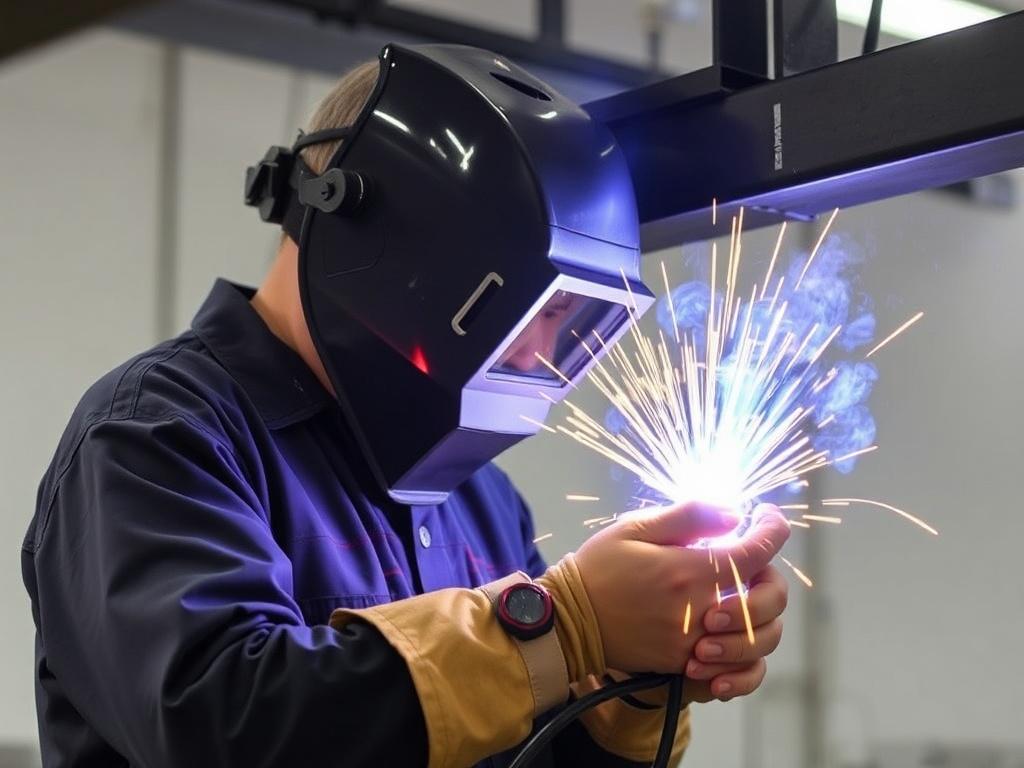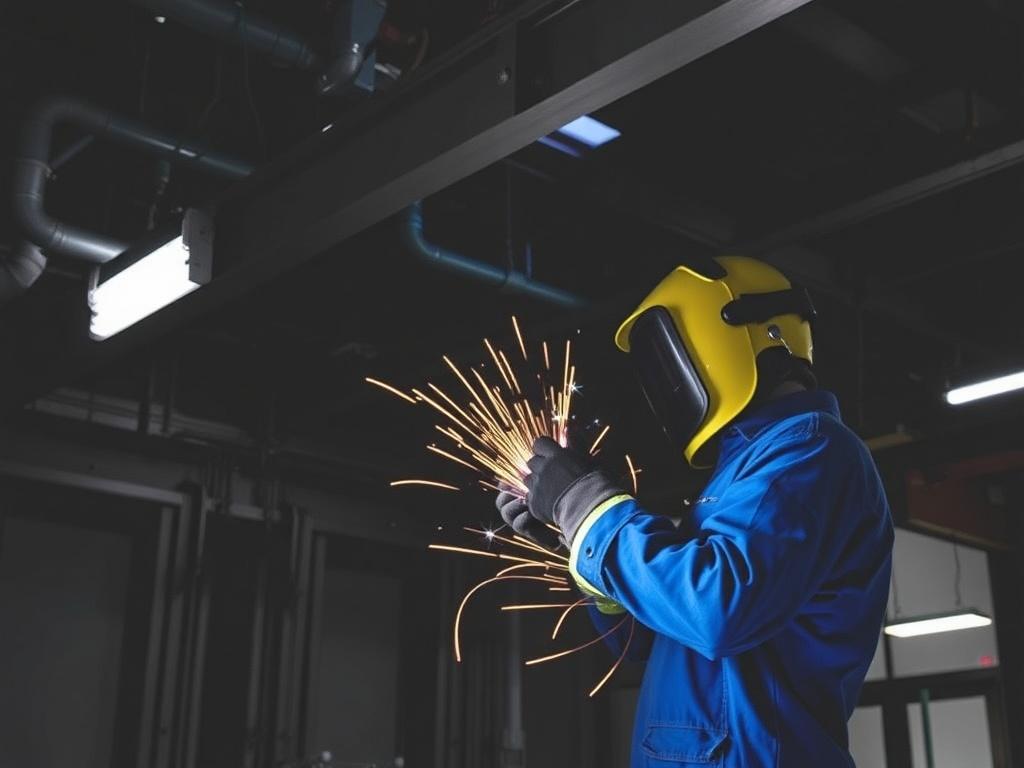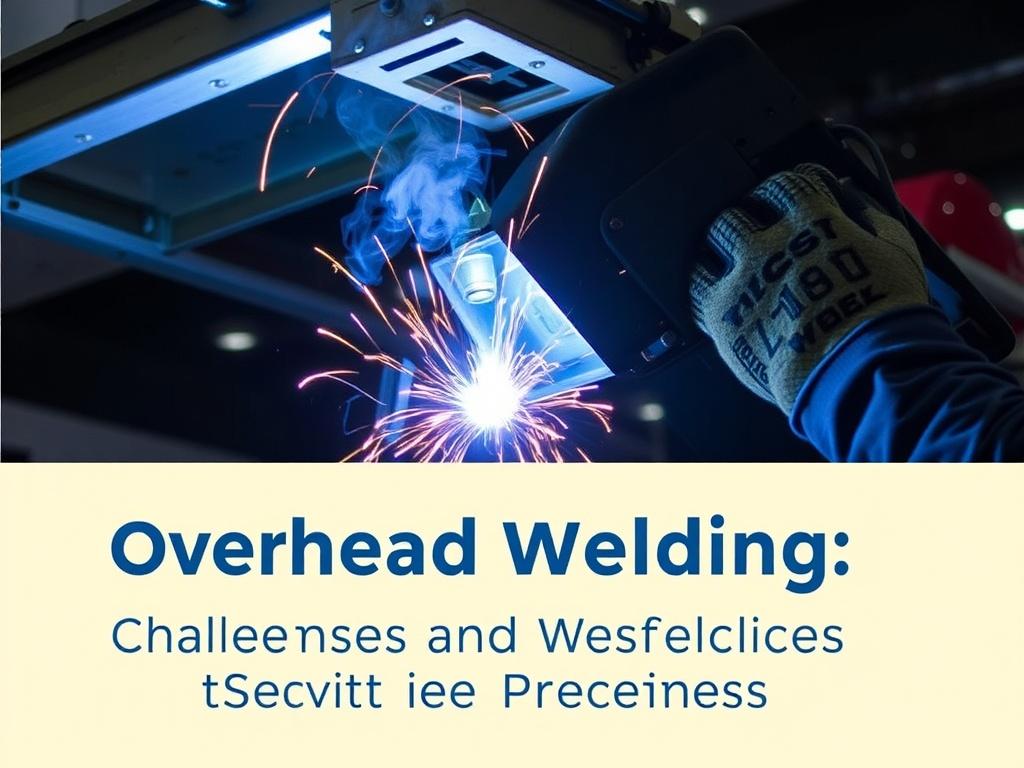
Welding in an overhead position is one of the most demanding tasks a welder can face. Unlike flat or horizontal welding, overhead welding requires both precision and endurance, as it involves working against gravity while ensuring the weld quality stays consistent and strong. In this extensive article, we will explore everything you need to know about overhead welding: the challenges it presents, the best techniques to adopt, essential safety tips, and how to master this craft for better efficiency and results.
If you’re a professional welder, a student in welding school, or just someone curious about different welding positions, understanding overhead welding’s nuances will greatly improve your skill set and safety awareness. So, let’s dive into this fascinating and demanding aspect of welding.
What is Overhead Welding?
Overhead welding is a welding position where the welder welds from below the joint, essentially working against gravity. The molten metal during welding tends to drip downward, which makes this position particularly challenging. In the American Welding Society (AWS) classification, overhead welding is typically referred to as the “4G” or “4F” position, depending on whether it involves groove or fillet welding.
Due to the awkward angle and the effect of gravity, overhead welding requires a higher level of control and expertise than flat welding. It is a common requirement in various industries such as pipeline construction, bridge building, and shipbuilding where joints in overhead positions are frequent.
Key Characteristics of Overhead Welding
- Gravity Challenges: Molten weld pool tends to fall due to gravity, increasing the risk of weld defects.
- Welder Positioning: The welder needs to work with the torch or electrode positioned below the joint, often requiring awkward body postures.
- Weld Pool Control: Maintaining control of the molten weld pool is critical to prevent slag inclusion and incomplete fusion.
- Safety Precautions: Additional protective gear is necessary to safeguard against falling molten metal and sparks.
The Challenges of Overhead Welding
Overhead welding is notorious for its complexity. From controlling the molten metal to facing physical discomfort, these challenges demand both mental and physical preparedness. Let’s detail the main difficulties experienced by welders working in overhead positions.
1. Gravity and Molten Metal Drip
One of the biggest enemies in overhead welding is gravity pulling the molten weld metal downward. This causes the weld pool to sag or drip, potentially leading to defects like porosity, slag inclusions, and lack of fusion. Managing the weld pool so it solidifies quickly and stays in place requires precise movement speed, correct electrode angle, and the ideal welding parameters.
Overcoming this challenge improves not only the strength of the weld but also its appearance, which is especially important in applications requiring high-quality finish.
2. Difficult Body Positioning
Since overhead welding forces the welder to work from beneath the joint, the body is often in uncomfortable positions. This can lead to fatigue, muscle strain, and reduced focus. Long welding sessions increase the risk of accidents and poor weld quality, as concentration can wane over time.
Welder stamina and agility play significant roles, and many welders train specifically to become comfortable with awkward postures typical for overhead welding.
3. Reduced Visibility and Access
Working below the joint often means limited visibility, especially in confined spaces or when working with heavy machinery above. The welder must rely on skill and sometimes additional lighting to ensure the correct weld bead placement and penetration depth. Access can be compromised, requiring specialized tools or welding equipment that provides flexibility and precision.
4. Increased Risk of Welding Defects
Due to all the challenges mentioned above, overhead welding has a higher risk of common defects such as:
| Defect Type | Description | Common Causes |
|---|---|---|
| Porosity | Gas pockets trapped in the weld metal | Improper shielding gas, moisture, contamination |
| Slag Inclusions | Non-metallic solid material trapped within the weld | Poor technique, incorrect electrode angle |
| Lack of Fusion | Incomplete joining of base metals and weld metal | Low heat input, fast travel speed |
| Undercutting | Groove melted into base metal without being filled with weld metal | Excessive current, incorrect weaving technique |
5. Safety Hazards
Overhead welding exposes welders to falling molten metal and sparks directly onto their bodies. Eye injuries and burns are significant risks. Fire hazards increase, especially where flammable materials might be present. Consequently, rigorous safety protocols and protective gear use are mandatory to avoid serious injuries.
Best Practices for Overhead Welding
Even though overhead welding offers numerous challenges, following best practices can help welders reduce risks and improve weld quality. These techniques are developed over decades of industry experience and training.
1. Choose the Right Welding Process
Several welding processes may be used for overhead welding, but some are better suited than others. Here are a few common methods for overhead work:
- Shielded Metal Arc Welding (SMAW or Stick Welding): This method is popular due to its portability and adaptability. It’s effective for overhead welding when using electrodes designed for vertical and overhead positions.
- Gas Metal Arc Welding (GMAW or MIG Welding): Offers faster welding speeds and cleaner welds. When equipped with proper shielding gas and settings, it can be effective overhead.
- Flux-Cored Arc Welding (FCAW): Combines ease of use with the ability to work outdoors and in windy conditions, making it versatile for overhead welding.
- Gas Tungsten Arc Welding (GTAW or TIG Welding): Although more challenging to perform overhead, TIG welding can produce high-quality welds and is preferred in precision work.
2. Use Electrodes and Filler Materials Designed for Overhead Welding
Electrode selection plays a pivotal role in overhead welding success. Electrodes designed for vertical and overhead use typically have coatings that help control slag flow and weld metal solidification rate. For instance, E6011 and E7018 rods are often used in overhead SMAW applications.
Using the appropriate filler metal helps ensure the weld remains strong and defect-free. Always refer to the material specifications and welding codes for electrode and filler compatibility.
3. Optimize Welding Parameters
Controlling heat input is essential. Too much current causes excessive molten metal sagging, while too little causes poor fusion. Welders generally use slightly lower amperage than flat welding to avoid dripping, combined with faster travel speeds to maintain the weld pool size.
Maintaining correct arc length and angle allows for better control of the weld pool and slag. Common practice involves directing the electrode angle slightly upward (5 to 15 degrees) to counteract gravity and stabilize the weld pool.
4. Maintain Proper Work Position and Comfort
To reduce fatigue and improve control, welders commonly use positioning aids such as welding stools, harnesses, or scaffolding that allows better body support.
Frequent breaks and stretching exercises can prevent muscle strain during long overhead welding jobs. Using welding helmets with appropriate headgear and ventilation further increases comfort and safety.
5. Prepare the Workpiece Thoroughly
Surface preparation is vital—rust, oil, dirt, or moisture can compromise weld quality, especially in overhead positions where controlling contaminants is harder.
Cleaning the base metal before welding reduces the risk of porosity and improves arc stability. Preheating the metal as required by welding codes or specifications can also reduce cracking and other defects.
6. Use Stringent Safety Measures
Full protective clothing such as flame-resistant jackets, gloves, and aprons is mandatory. Welders should use helmets with suitable shade lenses and face shields that cover their entire face and neck.
Proper ventilation and fire safety protocols should be in place, especially when working in confined or enclosed spaces. Supervisors and safety officers must conduct risk assessments before overhead welding operations start.
Techniques for Successful Overhead Welding

The techniques employed in overhead welding differ slightly from those used in more accessible positions. The goal is to stabilize the arc and molten pool while also working efficiently.
Common Overhead Welding Techniques
| Technique | Description | Benefits for Overhead Welding |
|---|---|---|
| Stringer Bead | A straight, non-weaving bead where the electrode travels steadily along the joint. | Minimizes chances of slag entrapment, easier to control in overhead position. |
| Weaving Bead | Side to side slight oscillations of the electrode during welding. | Widens the weld bead, helps fill larger gaps but requires more skill overhead. |
| Push Method | Electrode pointed in the direction of weld travel. | Lowers penetration depth, improves visibility of weld area, reduces slag entrapment. |
| Pull (Drag) Method | Electrode pointed away from weld travel direction. | Increases penetration, heat input; harder to control overhead but stronger welds. |
Most overhead welders prefer the stringer bead method combined with a slight push angle, as it offers greater control over the molten metal’s behavior against gravity.
Training and Skill Development for Overhead Welding

Since overhead welding is more challenging, proper training is critical for any welder aspiring to excel at it. Formal welding schools and apprenticeships often include dedicated modules on welding positions, including overhead.
Training focuses on:
- Understanding welding codes and specifications for overhead joints
- Proper posture and handling of welding equipment in overhead situations
- Practice using different welding processes suitable for overhead work
- Recognizing defects and defect prevention techniques
- Mastering safety protocols specific to overhead welding
Many welding certification programs require demonstrated proficiency in overhead welding, confirming that the welder meets industry standards for performance and safety.
Equipment and Tools for Overhead Welding
Having the right welding equipment can significantly ease the difficulty of overhead welding. Technology advancements have introduced tools designed specifically to improve safety, comfort, and weld quality.
Essential Gear for Overhead Welding
- Welding Helmet: Auto-darkening helmets designed for overhead positions provide optimal visibility and protect from intense light and sparks.
- Protective Clothing: Flame-resistant jackets, gloves, aprons, and boots protect welders from molten metal drops and heat.
- Welding Stools and Harnesses: Improve body positioning and reduce fatigue during extended overhead welding.
- Specialized Welding Torches or Guns: Designed with ergonomic grips and angled nozzles to improve access and maneuverability in overhead welds.
- Ground Clamps and Leads: Reliable grounding is crucial—using high-quality leads prevents irregular arcs and sticking electrodes.
- Ventilation Equipment: Fans or extraction systems help remove welding fumes, especially important when working overhead in enclosed areas.
Common Applications of Overhead Welding

Overhead welding is an essential skill in many industries. Some examples include:
- Construction: Structural beams and girders in buildings often require overhead welding.
- Pipeline Work: Welds made on pipelines suspended or elevated need overhead skills.
- Shipbuilding: Overhead welds are common in hulls and ship structures.
- Bridge Fabrication: Multiple overhead joints are present in bridge components and connections.
- Maintenance and Repair: On-site repair often requires overhead welding because of the fixed position of equipment or structures.
Overhead Welding Safety Tips
Safety should always be the top priority when performing overhead welding. Besides the obvious dangers of arc rays and sparks, overhead welding introduces some special hazards that need attention:
Recommended Safety Practices
- Wear Full Protective Gear: Including flame-resistant clothing, helmet, gloves, and boots to prevent injuries from falling molten metal.
- Use Eye Protection: Auto-darkening helmets or goggles that provide proper shade and reduce eye strain from prolonged exposure.
- Ensure Proper Ventilation: Welding fumes tend to accumulate; use fans or extraction systems to maintain breathable air quality.
- Secure the Welding Area: Mark and isolate work zones to prevent accidents by unauthorized persons.
- Inspect Equipment: Regular checks of cables, connections, and tools reduce the risk of electrical hazards.
- Keep Fire Extinguishers Ready: Overhead welding sparks can ignite nearby flammable materials, so having fire suppression equipment nearby is a must.
- Training on Emergency Procedures: All welders should be familiar with first aid and emergency protocols related to burns and eye injuries.
Conclusion: Mastering the Overhead Welding Challenge
Overhead welding is undeniably one of the most challenging welding positions, demanding expert skill, balance, and safety awareness. While it presents unique difficulties like molten metal control, awkward body positions, and safety risks, adopting the right techniques and best practices can make overhead welding manageable and even rewarding.
Whether you are a seasoned welder looking to improve your overhead welding performance or a beginner aiming to learn, consistently applying knowledge on welding parameters, process selection, safety practices, and body ergonomics will lead to better quality welds and safer work conditions.
Remember that overhead welding isn’t just about completing a task—it’s about mastering an art that combines precision, patience, and perseverance. With proper training, the right equipment, and a diligent approach, you can overcome the challenges overhead welding throws your way and become highly skilled in this valuable welding position.
Happy welding, and stay safe!
